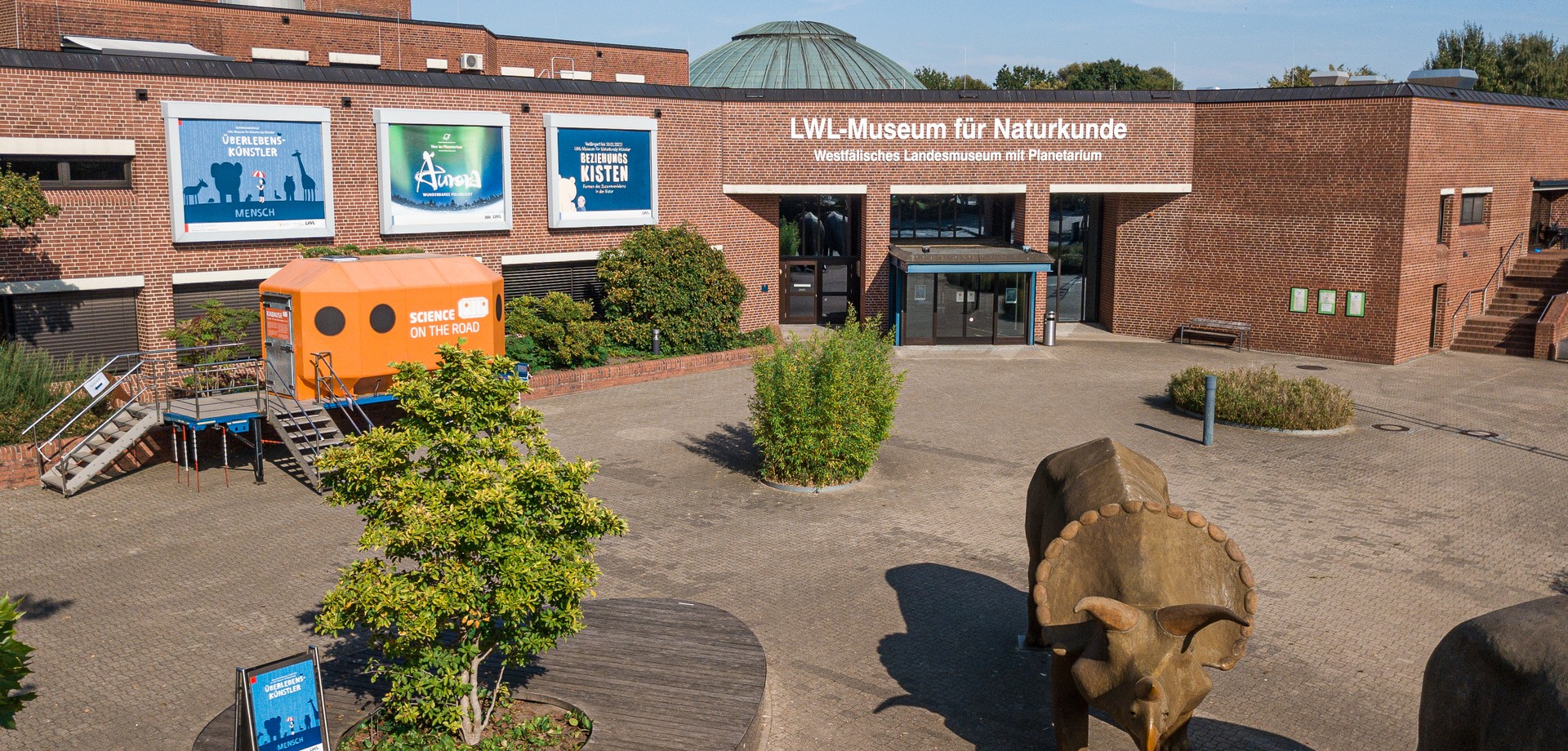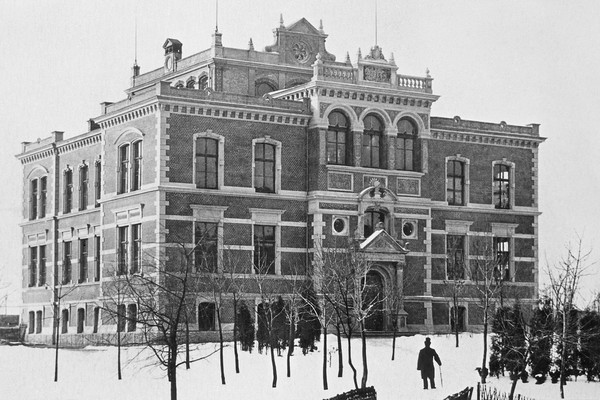
The LWL Museum for Natural History with its forecourt. Photo: LWL/Steinweg None
About us
The LWL Museum of Natural History is the only natural history museum in Germany with a large planetarium. On 4,200 square meters you will find many worlds under one roof. Experience changing and permanent exhibitions on global topics and regional nature. All exhibitions are suitable for people with disabilities. The films have subtitles, the topics are described in comprehensible texts and special stations invite you to linger and try them out. There is much to discover with the eyes and hands. Numerous animals can be touched. The museum houses unique objects such as the world's largest ammonite, unique fossils of swimming dinosaurs, dinosaurs or ice age animals as well as lifelike models of dinosaurs or a life-size mammoth.
The museum offers much more: travel into space in the planetarium and be amazed by the sharpest digital fulldome projection in Europe. Get up close and personal with nature at the Holy Sea Education and Research Center. Learn about the research and collections at the museum. Get involved in the work of the house by volunteering in citizen science.
We look forward to your visit.
On the history of the museum
From the Provincial Museum to the LWL-Museum of Natural History
At the end of the 19th century, Professor Dr. Hermann Landois, founder of the zoo in Münster, also initiated the founding of a separate Natural History Museum on the zoo grounds. On the 26th of June in 1891 the “Provincial Natural History Museum” on the Himmelreichallee was opened and on the 10th of February 1892 handed over to the public. Landois became the first volunteer director of the museum.
October and November 1944 and the start of the collection
In October and November 1944 the building was badly damaged by air attacks. In a preventive act the collections had been outsourced ahead of time, so that the war damage was limited to the actual building.
During the beginnings of the museum the main part of the collection was taken from the stock of the zoological and botanical sections of the Westphalian provincial association. In addition to that, the museum benefited from dead animals of the zoo, which it could dissect and use for its collection.
New museum building on the outskirts
When the old zoo decided to move to the western boarders of town because of space problems, the museum decided to come along. The Regional Association of Westphalia-Lippe (LWL), the head organization of the museum, made the construction of the new building possible. The large planetarium was integrated into the new building and has room for more than 260 people. The combination of a planetarium with a Natural History Museum has been unique in Germany until today.
Name change and museum management
The museum’s name went through several changes over the years. The “Provincial Museum of Natural History” turned into the “Westphalian Museum of Natural History – State Museum and Planetarium”. Since 2007 the name is “LWL-Museum of Natural History – Westphalian State Museum and Planetarium”.
For more than 32 years, the director of the museum was Dr. Alfred Hendricks. He retired in July 2016. His successor was the scientist Dr. Jan Ole Kriegs.
The giant ammonite as a landmark
Still today a mold of the largest ammonite of the world is located in front of the former building on the Himmelreichallee. Since 1982 the building has been in use by the Westphalian school of music. The original giant ammonite can be found in the foyer of the current museum building on Sentruper Str. 285 and can be visited Tuesdays through Sundays from 9am to 6pm.



